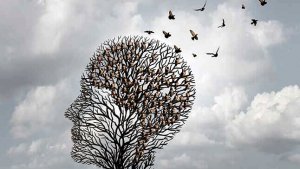Heuristics - Short Cuts Of The Mind

For a long time human beings have been considered a rational animal that sizes up its environment thoroughly and accurately. But, according to the words of S. E. Taylor we are “cognitively needy”. A metaphor to depict the human being as a maximum optimizer of mental processes. The cognitive strategy to achieve this are called heuristics.
Heuristics are mental shortcuts that we use to simplify how we solve complex cognitive problems. They are unconscious rules to reformulate problems and transform them into simpler and almost automatic operations. Thanks to them, we don’t have to use extensive reasoning every time a problem arises. However, these shortcuts are not entirely accurate and sometimes cause us to make errors.
We can find several types of heuristics in the cognitive processes we perform on a day-to-day basis. But in this article we are going to talk about those that we use more often. These are: the representational heuristic, the availability heuristic, the anchor and adjustment heuristic, and the simulation heuristic.
Representational heuristics
This mental shortcut is all about making inferences about the probability that a stimulus (a person, event, or object) belongs to a certain category. Through superficial characteristics and with the help of our previous outlines, we carry out this categorization. However, the fact that the information available fits with these previous outlines does not mean that it is necessarily true. As we said earlier, we can easily make mistakes.
An example of representational heuristics is the following situation. Imagine that somebody introduces you to three new people. Before meeting them you had been told that one of them was a children’s teacher. After a short conversation, two of them mentioned that they don’t like children and the other said he did. If you use representational heuristics, you will conclude that the one who said he likes children is the teacher.

Availability heuristics
This heuristic is used to estimate the probability of an event, the frequency of a category or the association between two phenomena. The estimate is made through the availability or frequency of cases that come to mind through our experiences. It would be the equivalent of an intuitive statistical inference, using the memories of our experience as a sample.
An example of this can occur when we ask questions like – are there more psychologists or psychologists? To answer this question, we can make use of this heuristic and see which of the two cases is more available. Thus, if psychologists come to mind more than psychologists, we will reply that there are more psychologists.
Anchoring and adjustment heuristics
When we are in a situation of uncertainty and we have no experiential knowledge about an event, we can take a point of reference. If we do this we will be using the anchor and adjustment heuristic. This is where the point of reference would be the anchor that we start from. We would then use different intuitive adjustments to solve this situation of uncertainty.
We usually use this heuristic, for example, when we ask ourselves what the average income in our country is. In this case we would likely to think about our own annual income and assess if we are above or below the average. And after making the relevant adjustments, we will then come up with an amount that we deem to be the average income in the country.
An error that occurs with this heuristic is the false consensus effect. This is a cognitive bias that makes us overestimate how much others have in common with us. We deduce that their beliefs, opinions and thoughts concord with our own, and we create this false consensus. In this case, our opinion acts as an anchor to deduce the thinking of others.

Simulation heuristics
This is the tendency to estimate the probability of an event based on how easily we can imagine it happening. The easier it is to create a mental image of it, the more likely it is to believe that such an event is possible.
This heuristic is highly associated with counterfactual thinking. This is a way of thinking in which we look for alternatives to past or present facts or current circumstances, all with the aim of reducing our pain. What often happens, however, is that we just increase it. An example of counterfactual thinking are the typical “what if …?” questions. These are our typical comments about what could have happened if something else had happened in a different way.
Another example is the fact that sometimes, the second place on the podium isn’t as happy as the third placed athlete. How could this be? Well, for the person in second place it is very easy to imagine themselves coming first, and now they are in a worse situation. On the other hand, for the one in third place, it is easy to imagine how something could have gone wrong. He could have been off the podium completely, and yet now he is in a better situation. Hence the greater satisfaction of the third place athlete compared to the one finishing second.
Now that we know all about heuristics, I’m sure you’ll be able to think of lots of examples where we use them in our everyday lives… In spite of not being precise and based on intuition, they are our evolutionary “weapons” to face certain problems quickly and efficiently. Of course, we shouldn’t fall into the error of using these mental shortcuts when making more important decisions in our lives. In these cases we should exert a lot of caution.
This text is provided for informational purposes only and does not replace consultation with a professional. If in doubt, consult your specialist.








